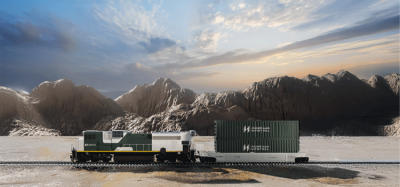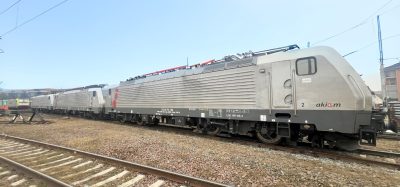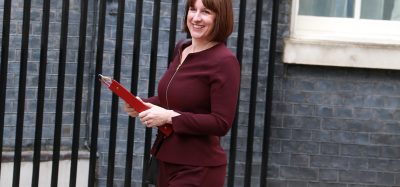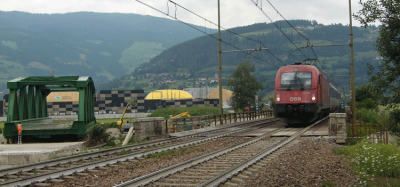Higher railway investment level can help reverse climate change
Posted: 26 September 2007 | | No comments yet
Railway infrastructure investments in Sweden are presently substantially higher compared with preceding planning periods. Reversing climate change while maintaining continued economic growth are political priorities and an expanded railway system can help fulfil both these objectives.
Railway infrastructure investments in Sweden are presently substantially higher compared with preceding planning periods. Reversing climate change while maintaining continued economic growth are political priorities and an expanded railway system can help fulfil both these objectives.
Railway infrastructure investments in Sweden are presently substantially higher compared with preceding planning periods. Reversing climate change while maintaining continued economic growth are political priorities and an expanded railway system can help fulfil both these objectives.
New investment for the period 2004–2015 amounts to SEK 108 billion (approximately €1.15 billion). Towards 2015, the new commuter railway tunnel under central Stockholm, the City Line, will be nearly completed. After decades of deliberation, the capital city will finally boast more than the two southbound tracks originally built in 1872. Concurrently, new tracks are planned for the commuter line northwest of Stockholm, enabling greater capacity and shorter journeys. Sweden’s second largest city, Göteborg, will benefit from an upgraded railway yard adjacent to the central station and the 80km double track between Göteborg and Trollhättan, northeast of the city. These investments will result in expanded commuter capacity and fewer traffic disturbances in the existing system. Upon completion of the tunnel through Hallandsås, passengers will enjoy shorter journey times between Göteborg and Malmö. Moreover, in Malmö, the country’s third largest metropolitan area, the new City Tunnel will be open to traffic as well as the new yards at the central station. Both the provincial commuter lines and the Öresund Line over to Copenhagen and beyond will benefit from greater capacity.
Along Sweden’s northern coast, the newly-constructed Bothnia Line – connecting with existing rail lines – will offer much better services for passengers. We also foresee substantially improved southbound freight connections.
Further north, the new Boden-Haparanda Line will be completed, permitting increased freight volume between Russia/Finland and Sweden/Norway.
Additionally, we will see a greater share of freight goods from northern to western Sweden being transported on the western lines, bypassing eastern Sweden. The present heavy pressure on Stockholm-Göteborg Western Main Line can thereby be reduced and instead utilised for the expected increase in freight volume and for more high-speed and regional trains.
Finally, we can expect fewer disruptions caused by storm felled trees. Rail/road combi traffic will grow favourably and help mitigate the adverse environmental effects of road transportation. A greater share of container goods to the Port of Göteborg will be shipped by rail.
Unable to meet rising demand
In spite of this sizable investment programme, Banverket has indicated that we may be unable to fully meet rising demands and expectations on the railway system, especially considering its considerable environmental benefits and the prospects for expanding labour market regions.
The basis for Banverket’s infrastructure development is to create a transportation system that is competitive as defined by the business sector itself; freight deliveries must be timely, cross-border traffic simple and adapted to rapid change. Our aim is to develop a sustainable transportation system for mobile and environmentally aware passengers who are concerned about climate change yet unwilling to forego other comforts in life.
Over the next ten years, we have concluded that the following measures will be needed to fully benefit from the advantages that the railway system offers:
- We must safeguard the present-day transportation system by upholding and reinstating high levels of operational and maintenance standards. Maintenance levels and the quality of traffic services are closely related, as are traffic growth and maintenance costs. This is clearly shown by how punctual services are
- We must make certain that the transportation system helps reverse climate change by promoting public transportation and ensuring that the railway is selected whenever it is best suited. Transportation services must also be better coordinated
- We must raise transportation quality by constructing additional alternative lines, prevent trees falling over tracks, invest in combi terminals and implement ERTMS to facilitate cross-border traffic and increase track capacity
- We must focus on major commuter lines and interconnection with buses and trains, thereby enlarging available local labour markets and employment opportunities for residents
- We must identify flexible approaches towards funding and planning of infrastructure in order not to unnecessarily hamper needed development
Proposals to the Government
Banverket is convinced that these are necessary steps to ensure that Sweden can profit from the full potential of railways. Together they represent the overall conclusions drawn in Banverket’s proposal to the Government on the focus for the coming planning period 2010–2019. These proposals are presently under review by broad sectors of Swedish society and will form the basis for the Government’s Infrastructure Bill during spring 2008.
Banverket has studied the effects of five alternative investment alternatives ranging from a 50% reduction from the present level to a 50% increase. A 50% decrease in funding is simply unacceptable in view of the demands on the railway system and the negative effects on traffic. Banverket also rejects a 25% decrease in funding. Some of the planned new railway projects can be completed at this funding level. However, the railways will fall short of demand and not be able to meet quality expectations.
The zero funding level corresponds to the financial allocation in the current plan 2004–2015. However, it does not provide compensation for increased costs. The expansion of the railway system, which started in the 1990’s, cannot be carried through. This plan was based on a forecasted traffic level for 2010, which largely has already been surpassed. Thus, also this investment level, according to Banverket, is insufficient in responding to traffic development. At this investment level, the railways cannot fully contribute to expanded labour market regions and help reduce the adverse effects of climate change. With a 25% increase in funding, Banverket can compensate for cost increases and finalise projects outlined in the current plan. However, it will short of achieving a sustainable transport system since railways can only absorb a limited volume of additional traffic.
Finally, with a 50% increase in funding – corresponding to an investment level of SEK 136.5 billion or approximately ?14.6 billion – the railways will be able to carry 50% more freight and trains will be a more competitive choice compared to air travel for most passengers.
Vision for the future
In this perspective, Banverket has elaborated its vision for the future. Railways will play a greater part in industrial freight traffic, especially to ports. However, more efficient loading and unloading of railway freight will yield the largest growth. In major metropolitan areas, freight terminals are located adjacent to distribution centres. There are also efficient road/rail systems throughout the country. Above all, railway freight is dependable with punctual operations according to specific schedules, outlining needed information concerning delivery time, prices and alternatives. Logistics planning is now much simpler.
The re-regulation of European railways has been successful, with steady traffic from Sweden to continental Europe. In short, the freight customer no longer needs to be concerned with details since the transport company takes full responsibility for the entire intermodal transport chain.
Banverket’s vision for future passenger traffic is that railways will replace air travel on distances up to 800–900km. Rail travel between Sweden’s three metropolitan areas is efficient with speeds up to 320km/h. Along Sweden’s northern coast, passengers can travel by faster trains.
In the metropolitan areas, capacity now corresponds to the new increased demand and is coordinated through joint planning measures with local public transportation. Passengers can easily transfer to other modes of transportation. Investments in operations and maintenance have kept pace with rising expectations. Commuting time has been reduced and most can reach their place of work or study within one hour, despite the fact that distances are longer. They can also always count on leaving and arriving on time.
Railways will play an increasingly important role in greenhouse gas reduction. Banverket, in its vision, outlines a scenario whereby energy consumption continues to grow, due to industrial expansion as well as more domestic and international transport. Despite this fact, the EU objective for a 20% reduction in greenhouse gas emissions by 2020 has been reached. This has primarily been achieved through close and active collaboration and coordination between all modes of transport. The focus has thereby been shifted from individual forms of transport to the actual journey with the lowest possible carbon footprint. The entire transportation sector is now incorporated in the carbon emissions trading system. Since each journey is selected with greater care, it is especially important to maintain high quality standards.
Establishing a sustainable transport system is crucial not only for Sweden but for Europe and the world. Climate change poses a serious threat to our welfare and way of life. Decisive action must be taken now. A comprehensive programme to expand the railway system can make a serious contribution towards reversing climate change with continued economic growth.
About the author
Katarina Norén is currently the Director of Strategy and Marketing at Banverket. Katarina has a Degree in Business Administration and Economics and was arlier employed at the Swedish National Road Administration.






